In a village in Cambodia, a bowl of soup contains an entire community’s efforts — and its hope for a healthier future.
It’s lunchtime at the Trapeang Svay Primary School in Cambodia and dozens of children clad in black-and-white uniforms are dashing across an open courtyard during a downpour, each clutching a bowl and spoon as they walk, run, or skip their way to the cafeteria — an open-air pavilion that sits alongside a rice paddy rimmed by palm trees.
In this tropical kingdom in Southeast Asia, the monsoon season lasts for nearly half the year — from May to November — and today the school’s courtyard is flooded. Cambodia is located in one of the most disaster-prone regions in Asia, where natural disasters and extreme weather can wreak havoc on vulnerable families, especially those living in Siem Reap province.
Trapeang Svay Primary School sits just 30 miles from the country’s famous Angkor Wat temples, which draw hundreds of thousands of tourists each year from across the globe. But most households in this largely rural area don’t directly benefit from that tourism wealth. The World Bank reports that 90% of the country’s impoverished families live in rural areas, surviving on less than $1 a day.
As a result, more than one-third of Cambodia’s children are stunted by chronic malnutrition, a type of hidden hunger in which vital micronutrients are absent from daily food consumption, according to a 2010 Cambodian Demographic and Health Survey.
Most of the students who attend the Trapeang Svay Primary School walk or bike to school from the surrounding area, a rural part of the country where poverty is common and hunger widespread. For many of them, the lunch they’re about to receive is their most reliable meal of the day.
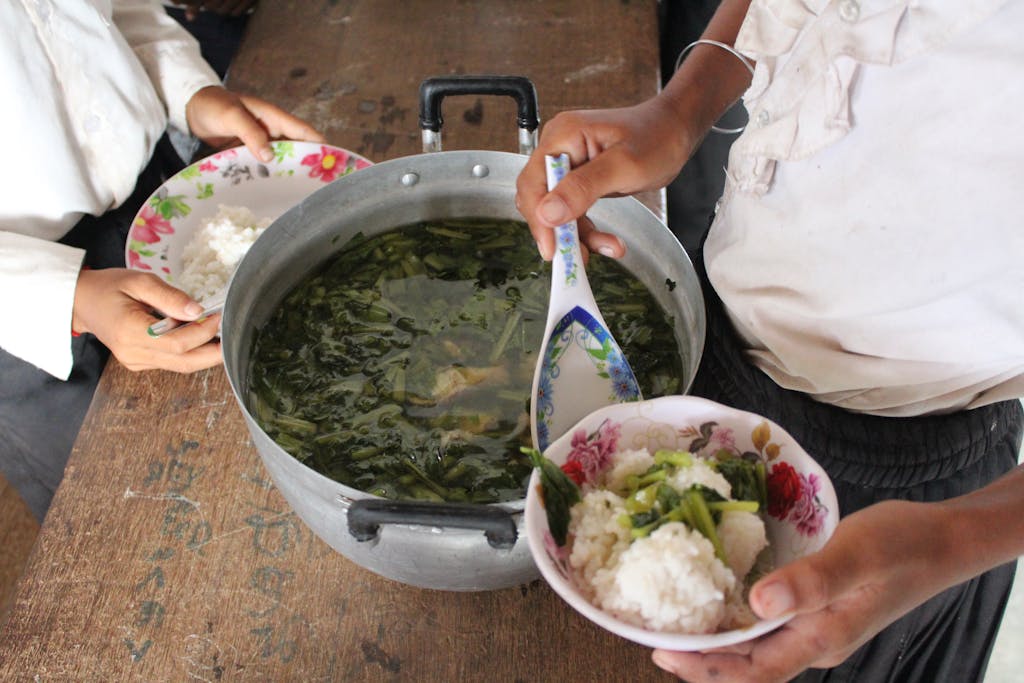
A student enjoys freshly prepared soup at a primary school in Siem Reap Province, Cambodia, where the UN World Food Programme is working with local farmers to source school meals.
But this lunch — a traditional Khmer soup — isn’t just feeding hungry children, it’s supporting the entire community. It was prepared with fresh vegetables like cucumbers, spinach, and eggplant grown by local farmers as part of a “homegrown” school meals initiative run by the United Nations World Food Programme (WFP).
Many hands came together to make this meal possible — from the farmers who grew and harvested the crops, to the school cooks who washed, chopped, and cooked the ingredients, to the students who helped serve their classmates on straw mats and picnic tables.
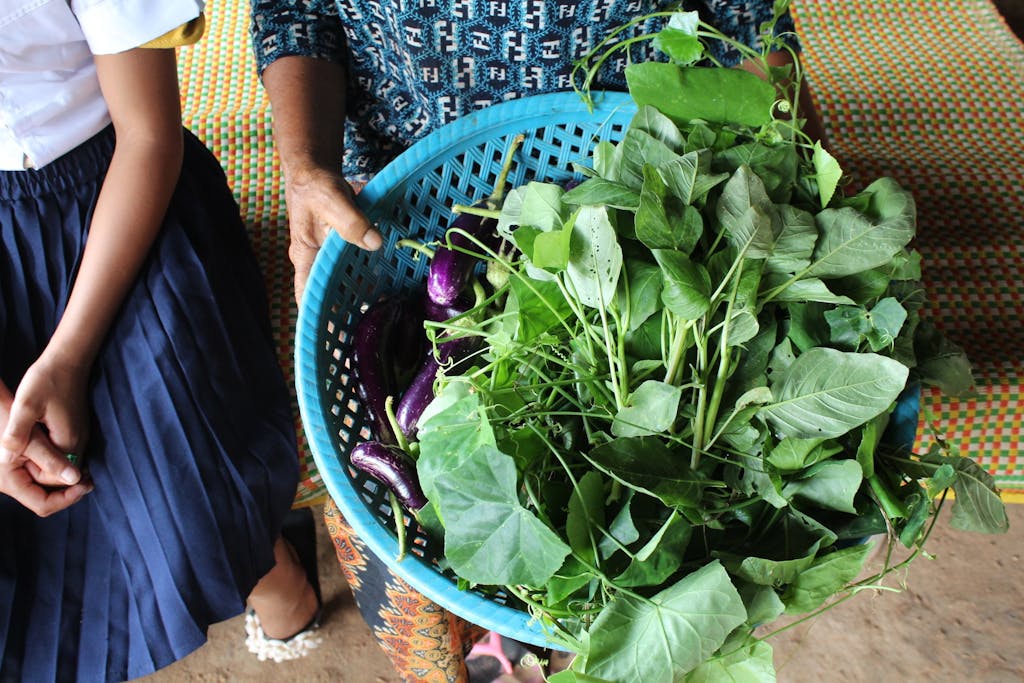
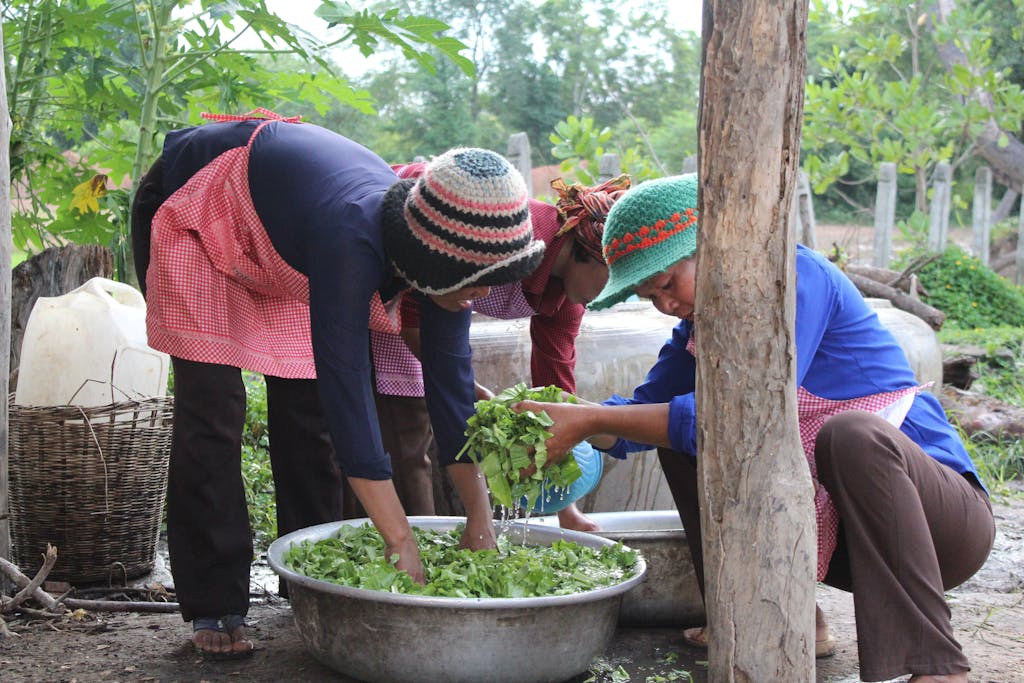
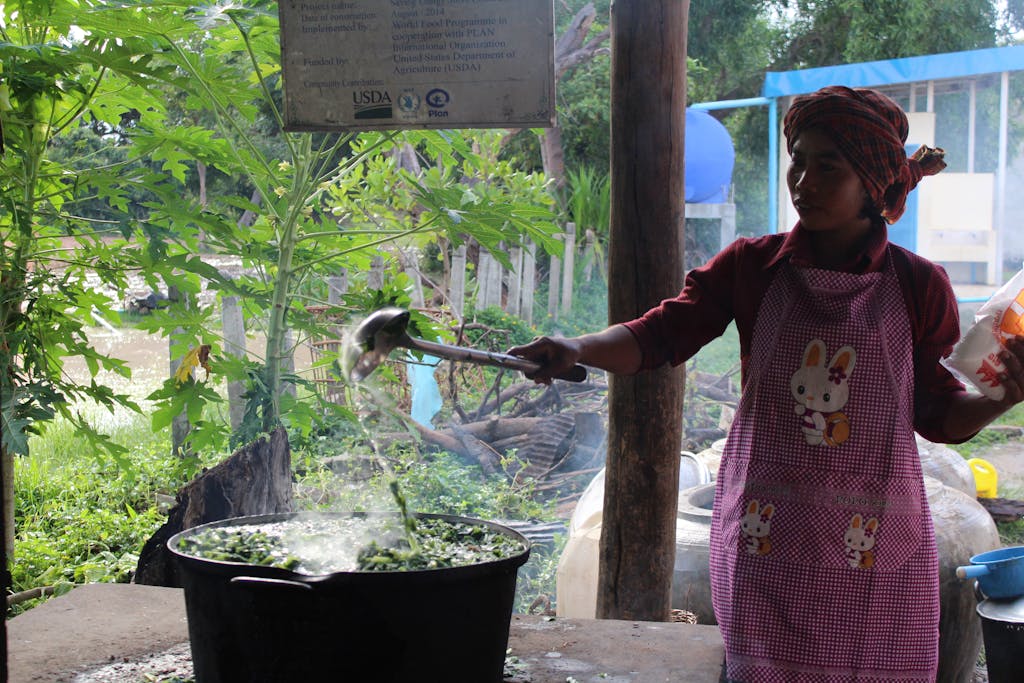
By embracing the “locavore” concept in its schools, communities like this one are creating a powerful movement to lift farmers and their families out of poverty and hunger. This bowl of soup represents the dedication of one community to nourishing its own future.
It also represents how WFP is leveraging innovation — in this case, a sustainable supply chain that connects local farmers to nearby schools — to deliver nutrition so children don’t go hungry.
Innovative approaches like these are part of a broader commitment by UN Secretary-General António Guterres to modernize the organization by embracing smarter technology, practices, and partnerships. Right now UN staffers across all agencies and the globe are piloting, testing and scaling new ideas and new ways of working to deliver better results and help achieve the Sustainable Development Goals for everyone, everywhere.
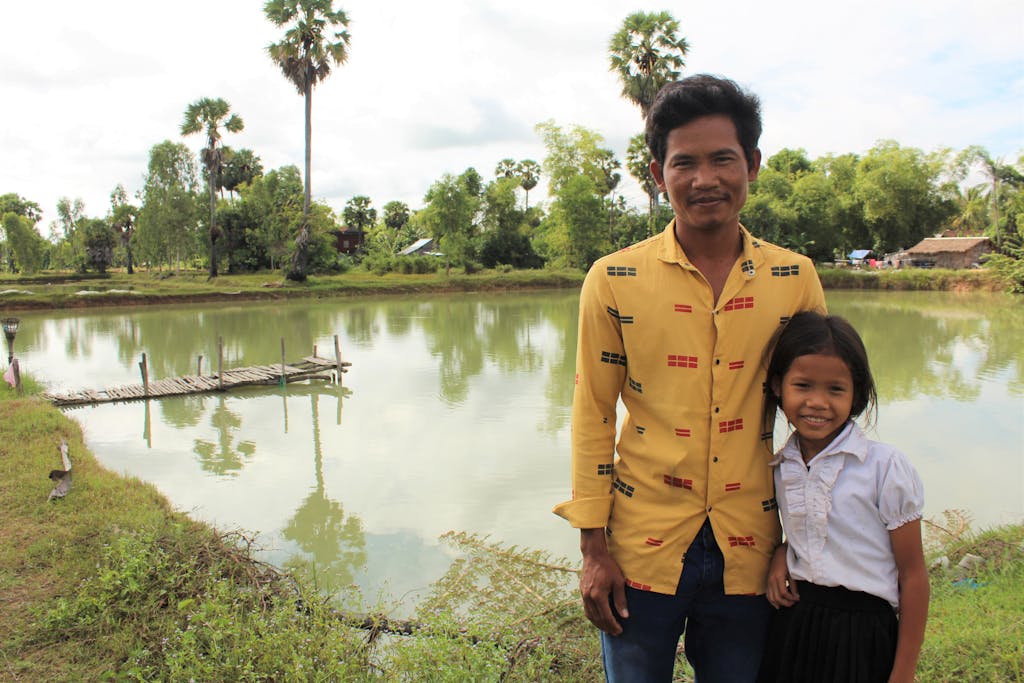
Yun Kosal, a smallholder farmer who works with the U.N. World Food Programme, stands with his daughter in front of their tilapia pond in rural Cambodia.
A Father and Farmer
Yun Kosal is one of the local farmers who supplies fresh food to schools in Siem Reap Province to create nutritious soups and other breakfasts and lunches for local elementary students.
And these meals, in turn, help him provide for his own family.
Like most of his neighbors, Yun lives in a simple, two-story house built of wood and bamboo that lacks electricity. In the 90-degree heat, the best way to stay cool is to swing in a hand-woven hammock in the shade of the unenclosed ground floor, where he and his wife and children spend most of their time when they’re not tending to the family’s crops.
Now in his early 30s, he’s been farming for most of his life. Behind his house is a plot of land where he grows vegetables like cucumbers and melons.
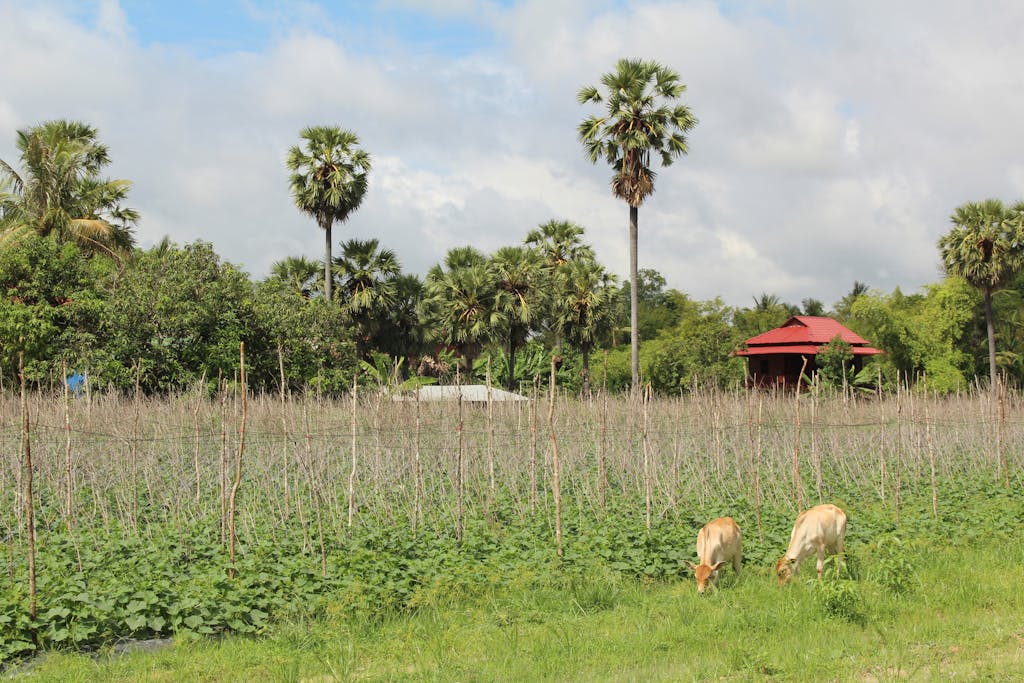
Yun's farm in rural Cambodia produces fresh vegetables like cucumbers and melons that he sells to the local school through WFP's homegrown school meals program.
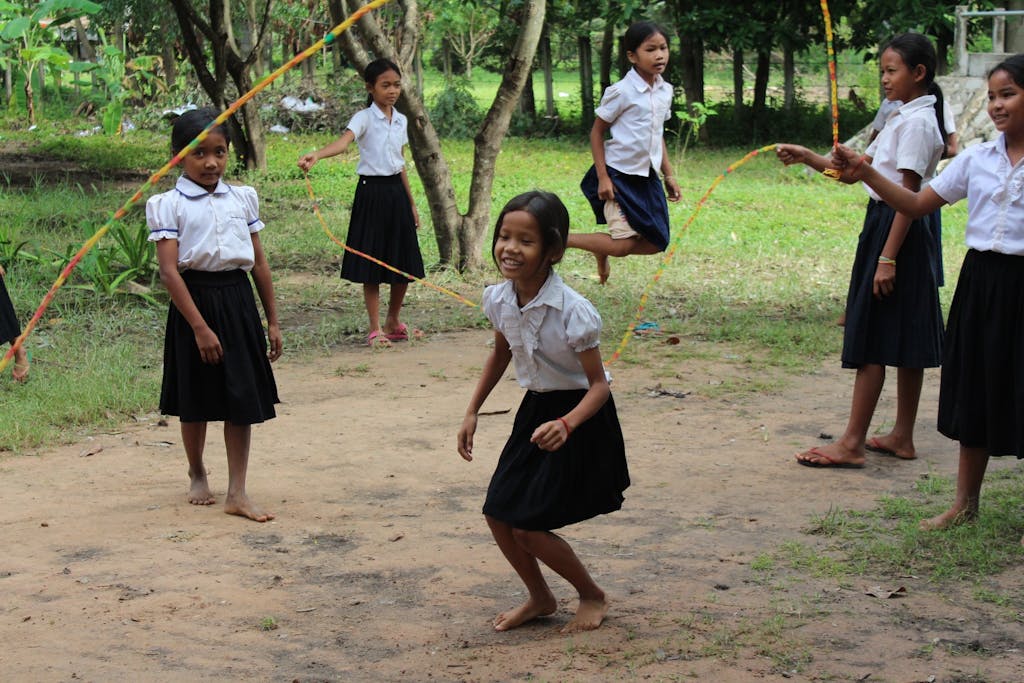
Yun's daughter plays with her classmates during recess after enjoying a nutritious school meal created using vegetables grown by her father and other local farmers.
Yun is invested in WFP’s homegrown school meals for several reasons: He’s not only a participating farmer and food producer, but also the father of a local elementary student, a daughter named Sah, who benefits from the vegetables and fruit he provides as part of the school meals program at Trapeang Svay Primary School. After school, his daughter helps him feed the tilapia that swim in an adjacent fish pond.
Before joining WFP’s homegrown school meals initiative, he was forced to travel long distances to find decent markets to sell his crops. Now he has a fair, consistent buyer just two miles from her home, and he knows this produce is helping children like his daughter Sah grow healthy and strong.
Feeding Future Generations
WFP delivered its first school meal in 1963 in the country of Togo. Since then, the UN agency has delivered tens of millions of meals to children in some of the most impoverished places on the planet. In fact, the agency is the largest provider of school meals in the world.
Research has shown that school meals not only provide critical nutrition during a child’s development, they can also boost enrollment, attendance, and achievement rates in the classroom. For vulnerable households in particular, school meals mean parents are less likely to pull their children — particularly girls — out of school to be married young, help take care of the household, or put to work.
In places where local food is unavailable, like areas plagued by conflict or natural disaster, WFP transports fortified grains that can be prepared as a porridge, or High-Energy Biscuits that are ready-to-eat and don’t require clean water or cooking.
This traditional approach can be especially effective in countries like Yemen, where violence and drought have wreaked havoc on local agriculture.
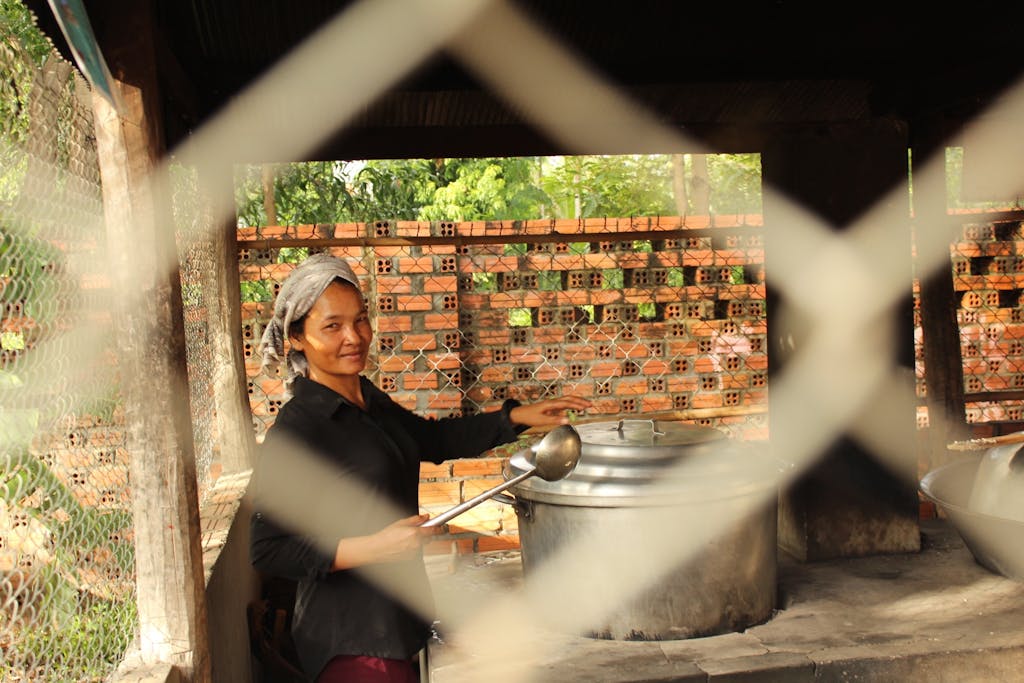
A school cook in rural Cambodia prepares a nutritious soup using locally grown produce.
But nearly 15 years ago, WFP staffers also began working directly with smallholder farmers and suppliers to source locally grown ingredients for the breakfasts and lunches the agency provides to hungry schoolchildren.
This model not only improves the dietary diversity of WFP’s school meals, it also provides a dependable market for local farmers while saving the agency millions of dollars in transportation and storage costs. By strengthening local food systems, homegrown school meals have the power to not only nourish hungry children but lift smallholder farmers out of poverty at the same time.
In 2015, WFP piloted a homegrown school meals initiative Cambodia with just two schools. Today, that number has grown to 267 schools in seven provinces enlisting the support of 665 farmers. Together with local NGO’s, WFP is also helping provide seeds and other materials to help establish school gardens across the country that teach students basic skills about agriculture. In fact, gardening is now a part of the national curriculum in Cambodia for primary schools.
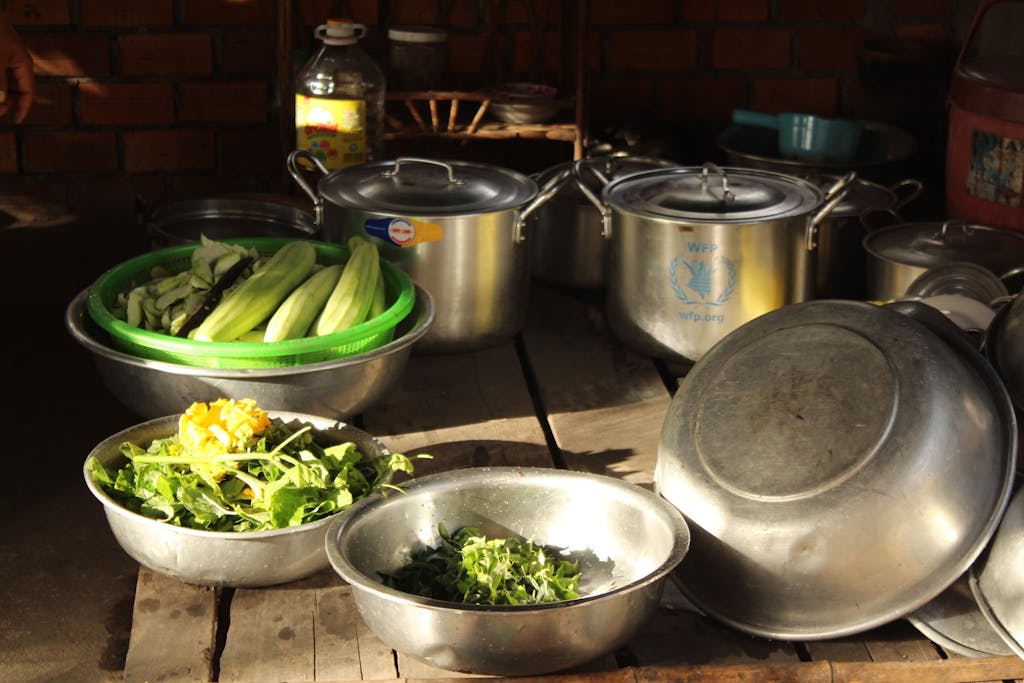
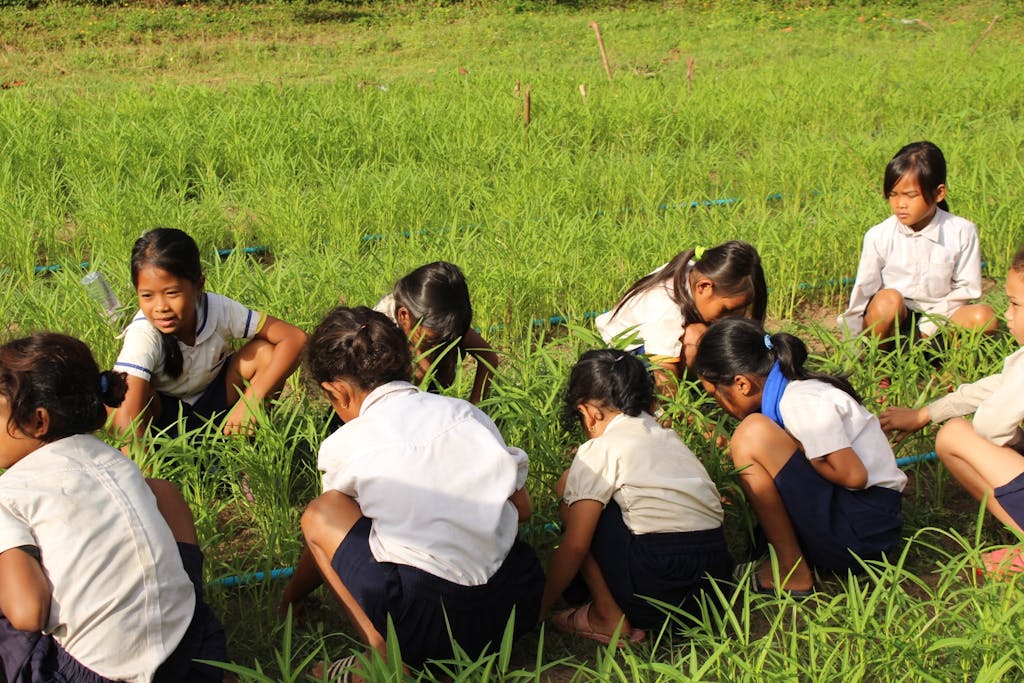
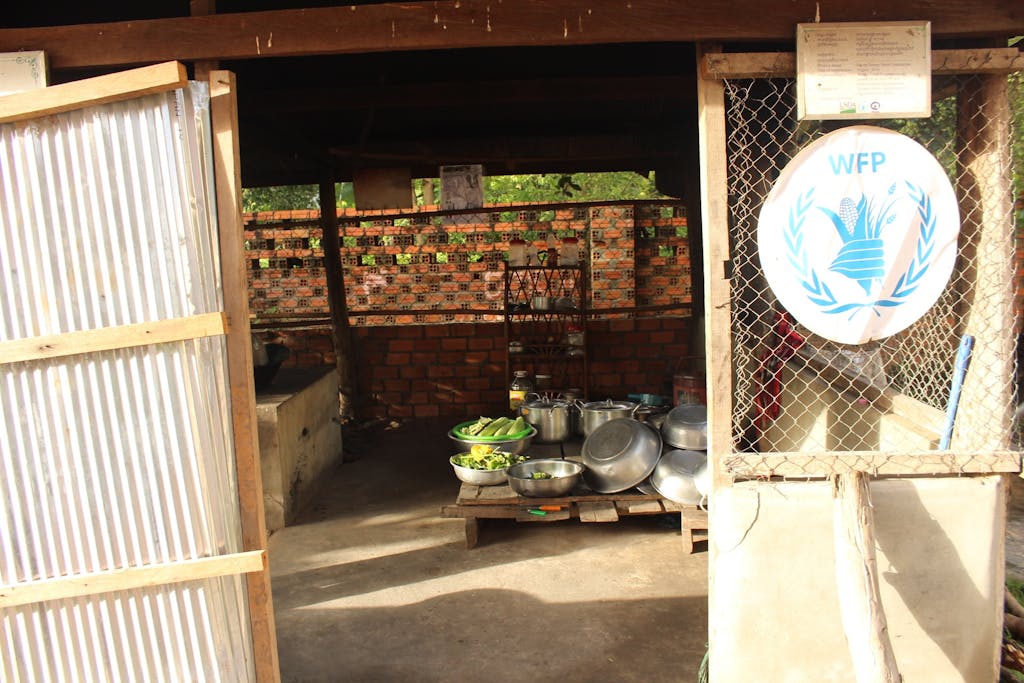
As part of its school meals outreach, WFP also provides lesson plans and materials to support better hygiene and sanitation in the classroom, including toothbrushes and soap, which can prevent the spread of common diseases that curb a child’s ability to absorb nutrition.
The agency also supports the construction of school infrastructure, including water tanks and bathrooms. At the Trapeang Svay Primary School, for example, WFP helped build a new kitchen and cafeteria in which to serve the meals.
Right now, WFP is examining how its homegrown approach to school meals can be adapted to meet the challenges of a changing climate. The agency is piloting a hydroponics initiative in the desert areas of Namibia that utilizes soilless-growing technology so it can source school meals through local agriculture in regions that experience chronic drought or difficult growing conditions.
Globally, 46 countries across the globe now benefit from WFP’s homegrown school meals model.
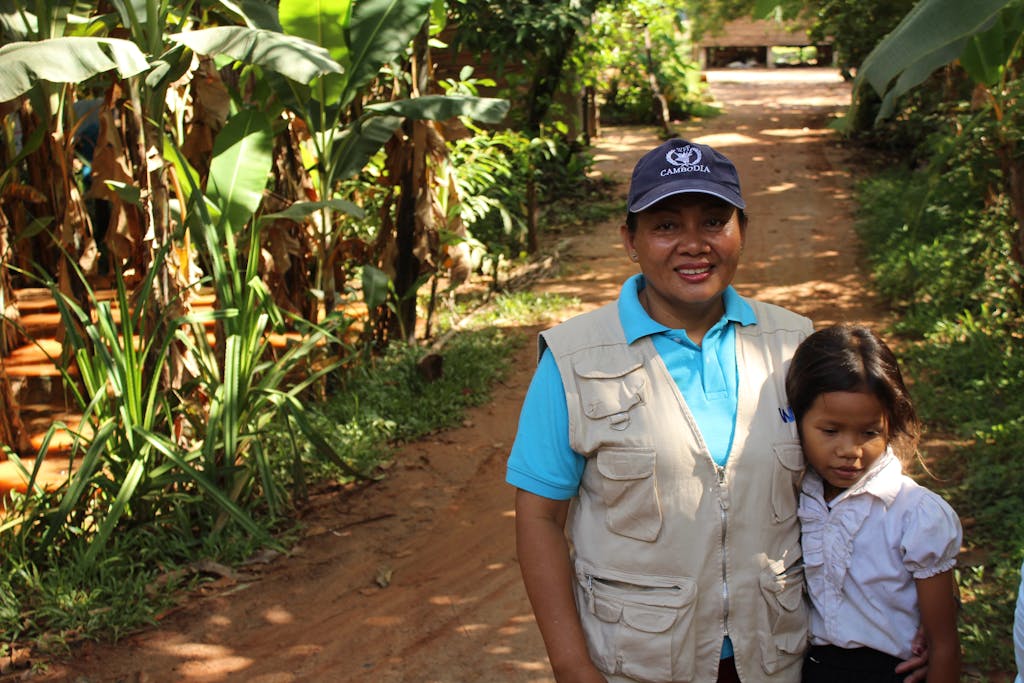

A Teacher and Humanitarian
Somana Mao, a WFP staffer in Cambodia, knows firsthand why school meals are so vital for a community’s future.
She grew up in one of the nation’s poorest provinces years before WFP first began providing school meals. She remembers her childhood as one plagued by hunger and illness.
“Every day when I would go to school, my stomach grumbled from hunger,” she said.
As a survivor of the Khmer Rouge, she witnessed how humanitarian aid from UN agencies like WFP — including its school meals — helped the country recover and rebuild after five years of genocide.
Before joining WFP, she worked as a teacher and still maintains the warmth and ease that comes from commanding a classroom of kids. Students like Sah take to her right away. She says school meals not only helped her students concentrate in the classroom, they also improved the lives of their parents. School meals alleviated the financial burden and stress of putting food on the table while also reducing what some have called “time poverty.” Instead of spending time and money cooking and preparing breakfasts and lunches, parents are given the opportunity to pursue other activities, such as learning new skills or enjoying much-needed leisure time.
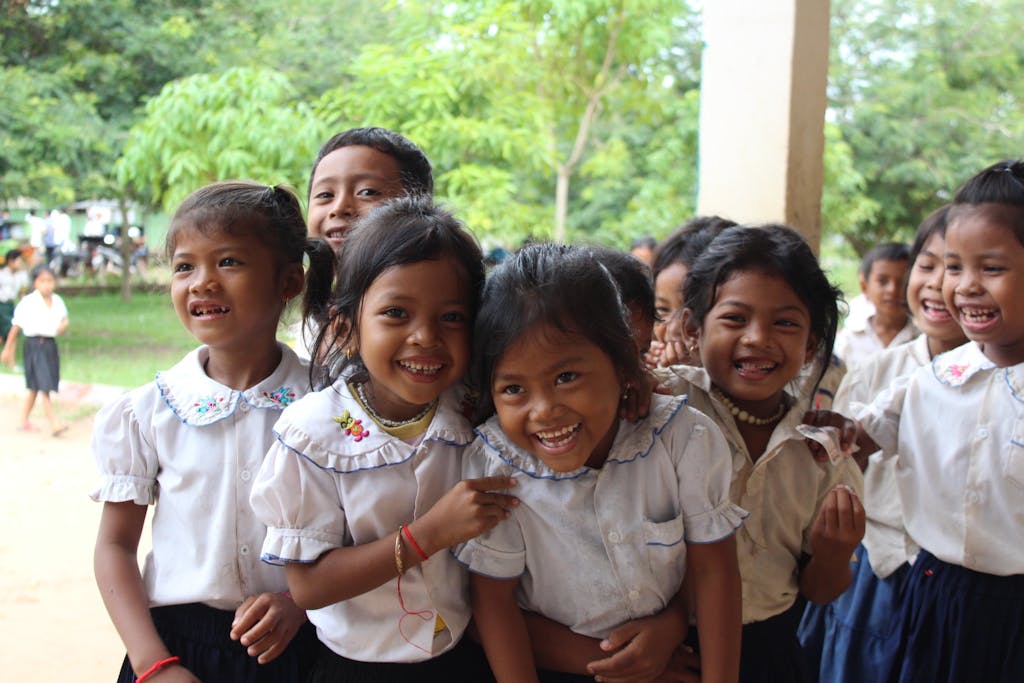
In Cambodia, some 300,000 children receive school meals from WFP. Traditionally, these breakfasts and lunches have consisted of canned fish donated by Japan, fortified oil and rice from the U.S., yellow split peas, and iodized salt. Increasingly, local farmers are supplying fresh produce to create "homegrown" school meals.
Scaling Up Success
At the end of each academic year, local farmers like Yun share lessons learned about what’s working with the homegrown school meals strategy and what needs improving. WFP staffers convene these meetings across the country to bring together food producers, school administrators, cooks, and members of the community responsible for working directly with farmers to coordinate payments, establish timing for food deliveries, and ensure quality standards. These feedback sessions help troubleshoot issues that are specific to each school and community while creating a sense of trust and cohesion among the many individuals responsible for helping this local supply chain succeed.
Last year, WFP staffers in Cambodia started pairing schools that are already supported by local agriculture with schools that are trying to adopt the homegrown school meals model so administrators and farmers can share information and expertise. This “twinning” approach has enabled the homegrown school meals strategy to scale up.
Sustainable supply chains not only keep young bodies and minds nourished while lifting smallholder farmers out of poverty, they also strengthen the UN’s partnership with local and national governments. In Nepal, for example, this homegrown model has helped the government “graduate” out of WFP assistance to full national ownership of the country’s school meals program, which is the agency’s ultimate goal.
Since 1990, 44 countries have assumed control of school meals efforts from WFP, thanks to the agency’s support and technical assistance. For its part, the government of Cambodia has announced plans to establish a national school meals program by 2021.
In Siem Reap province, homegrown school meals have improved lives throughout the community. Participating farmers have gained a better understanding of prices, market opportunities, and expansion. For some, their livelihoods are no longer merely about subsistence, but success. Yun says he sees himself as a businessperson now.
The additional income earned by farmers like Yun enable them to not only invest in their farms by purchasing new equipment, land, seeds, and fertilizer, but also to invest in their homes and families. Thanks to WFP’s homegrown school meals model, Yun has been able to buy school supplies for his daughter.
In Cambodia, stronger local economies mean fewer working adults are forced to migrate to neighboring Thailand in search of migrant labor, keeping families together.
And then there’s the sense of pride that comes from knowing that one’s hard work is helping the next generation succeed. That’s hard to put a price on.
“I’m proud I can use my hands to grow food for my daughter and her classmates,” Yun says.
Want to learn more about how the UN is innovating to improve lives? Sign up to be a champion of innovation.
Innovation in Action shares the stories of how the UN is working with partners to pilot, test, and scale new ideas and new ways of working to deliver better results for people on the ground. From using artificial intelligence to better understand peoples’ needs to innovative methods to reduce maternal and infant mortality to reimagined partnerships and new approaches to mediation, the UN is working across issues and sectors to create dynamic and impactful solutions. The series has been developed with input and support from the UN, including the UN Innovation Network.





